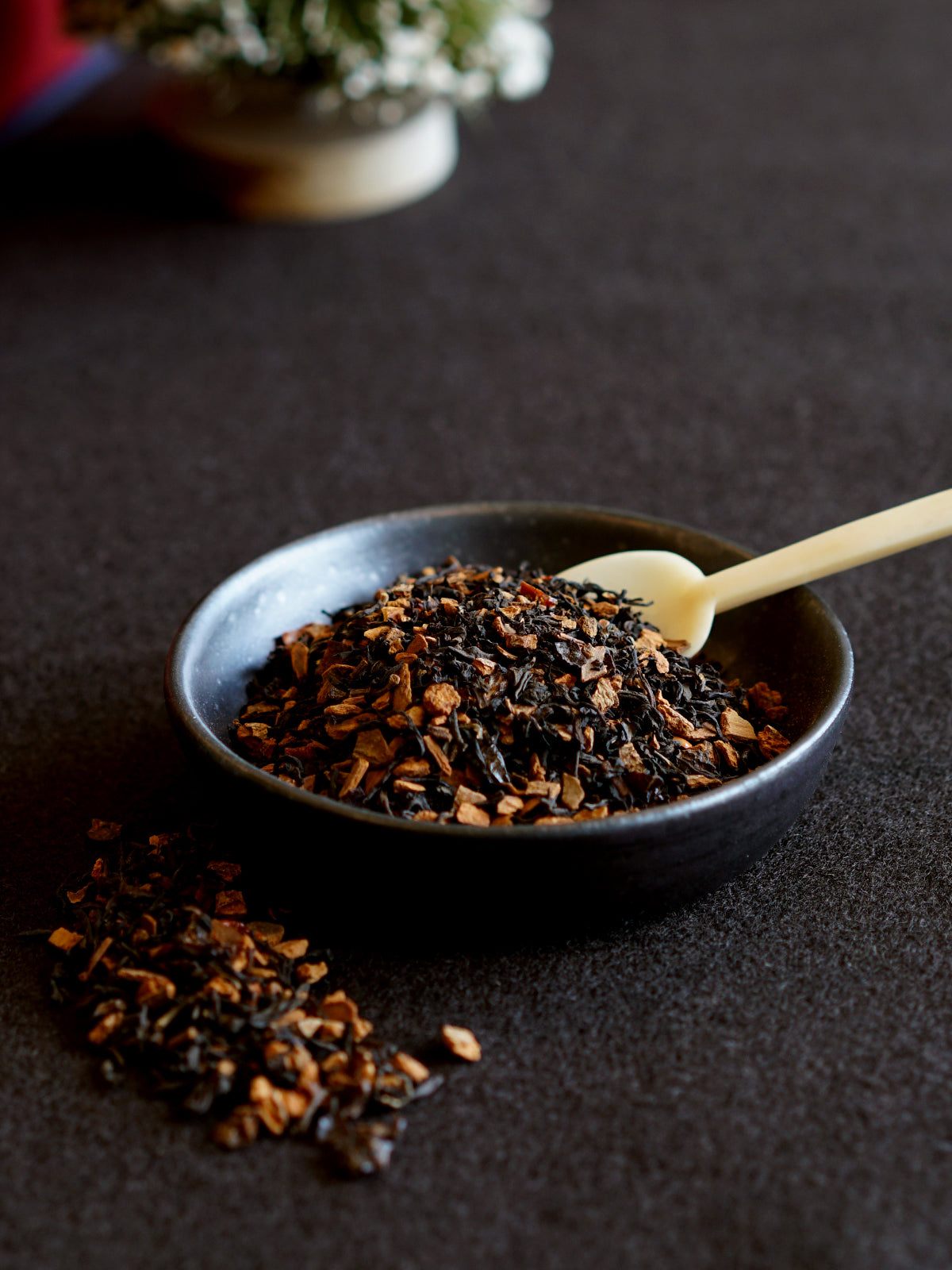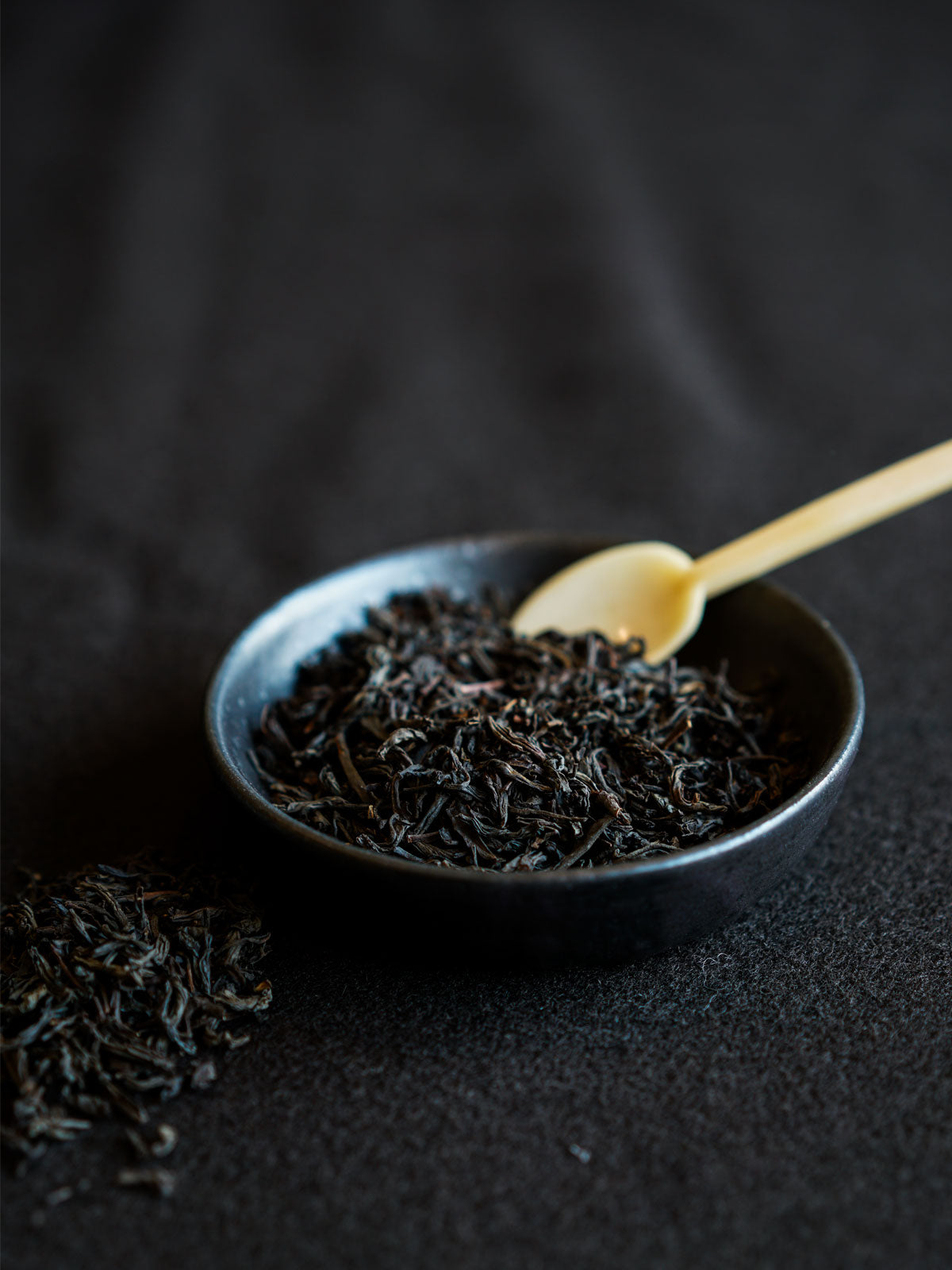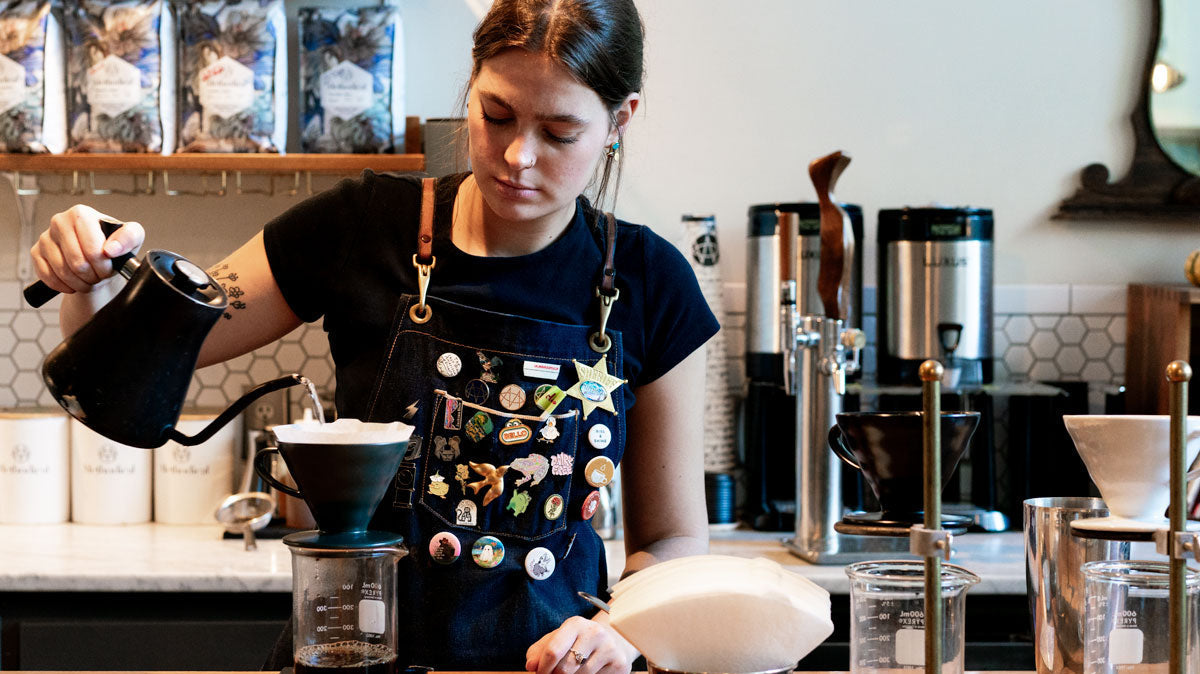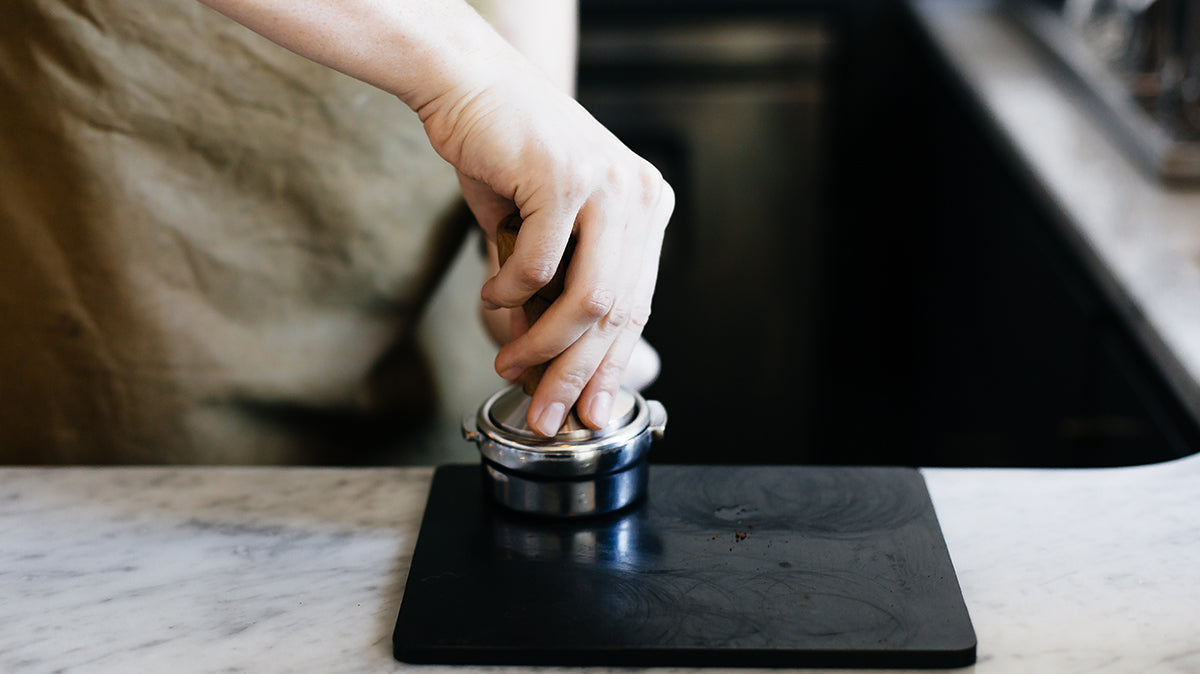There’s a certain satisfaction in pulling the perfect shot: the steady pour, the caramel-colored crema, the aroma that fills the kitchen. But espresso this good doesn’t happen by chance. It starts with thoughtfully roasted coffee and the right machine to bring out every nuanced flavor.
Whether you’re buying your first espresso setup or you’re ready for an upgrade, the options can feel overwhelming. Semi-automatic, single or dual boiler, E61 or saturated group head—it’s a lot to sort through. In this guide, we’ll break down what these features mean, how they affect your espresso, and which machines offer the best balance of performance and value for home baristas at every level.
Types of espresso machines
The right espresso machine balances how much control you want with how much convenience you need. From fully manual levers to push-button automation, each type offers a different level of involvement in the brewing process and shapes the flavor and texture of your espresso. Understanding how they work will help you choose the one that fits both your routine and your approach to coffee.
Manual
Manual, or lever, espresso machines are the original style of espresso maker. Instead of using a pump to create pressure, you physically pull a lever to push hot water through the coffee grounds. This hands-on process gives you direct control over every variable—pressure, pre-infusion, and shot time—making it possible to fine-tune your espresso with precision. Manual machines appeal to purists who enjoy the craft and ritual of brewing, but they also come with a steeper learning curve.
Semi-automatic
Semi-automatic espresso machines strike the balance most home baristas are looking for. You grind and tamp the coffee, lock the portafilter in place, and start and stop the shot with the push of a button or flip of a switch. This setup gives you the consistency of a pump-powered system while still allowing you to control how long the shot runs and fine-tune the results. It’s the most common style because it offers that ideal mix of precision and flexibility.
Automatic
Automatic espresso machines look and operate much like semi-automatics but include one key difference: a built-in flow meter. This feature measures the exact amount of water used for each shot, automatically stopping the extraction once your programmed volume has been reached. You still grind, dose, and tamp the coffee yourself, but the machine ensures consistent shot volume every time. The added automation can simplify workflow for busy coffee shops, but for most home brewers, the added convenience may not justify the extra cost.
Super-automatic
For those who want café-style espresso with minimal effort, a super-automatic machine does nearly everything for you. Just add whole beans and press a button—the machine grinds, doses, tamps, brews, and even steams milk in some cases. While the convenience is unmatched, super-automatics offer less control over factors like dose, extraction time, and temperature, meaning you trade customization for consistency and ease of use.
Capsule
Capsule or pod-based machines, like Nespresso, take convenience even further. Each capsule contains a pre-measured dose of coffee that the machine automatically brews at the press of a button. There’s no grinding or tamping required, and cleanup is nearly effortless. While capsule machines can produce a decent espresso-style drink quickly, they offer limited control and can’t quite replicate the depth or texture of espresso made with freshly ground coffee. Some models offer reusable capsules for those who prefer to use their own beans.
What to look for in an espresso machine
Espresso machines vary as much in philosophy as they do in design. Some prioritize simplicity, others precision. Understanding how different features affect performance helps you choose a machine that not only fits your kitchen but also matches your rhythm and approach to making coffee.
Portafilter size
The size and shape of the portafilters that come with your espresso machine affect how the water interacts with the coffee. The standard commercial size is 58 mm, which offers greater flexibility in extraction and makes it easy to find compatible accessories like tampers, baskets, and distribution tools. Its wider and shallower design allows for more even extractions, though it also leaves more room for channeling if your puck prep isn’t consistent.
Smaller sizes like 54 mm or 51 mm have deeper baskets that can reduce channeling but tend to extract less evenly overall. While the portafilter size can subtly influence flavor clarity and mouthfeel, the machine’s overall design and temperature stability have a far greater impact on espresso quality.
Temperature control
Temperature stability is key to balanced, flavorful espresso. Machines equipped with PID (Proportional-Integral-Derivative) controllers, a type of digital temperature control system, maintain a consistent brew temperature—typically between 195°F and 205°F—instead of fluctuating above and below the target range. This steady heat prevents bitterness or sourness and allows you to fine-tune temperature settings for different roasts.
At our shops, we typically keep our espresso machines around 201°F, which tends to bring out the coffee’s sweetness and nuance. If your machine allows for temperature adjustments, it can make a noticeable difference in dialing in your ideal shot.
Boiler configuration
Your machine’s boiler system determines how efficiently you can brew and steam milk at the same time. Single-boiler machines use one boiler for both espresso and steam, meaning you’ll need to wait between pulling a shot and frothing milk as the temperature adjusts. Dual-boiler machines, on the other hand, have independent boilers—one for the group head and one for the steam wand—allowing you to brew and steam simultaneously.
The result is smoother workflow, more consistent drinks, and less waiting between beverages. Dual boilers do come at a higher price, but for frequent espresso drinkers or anyone who enjoys milk-based drinks, the upgrade can be well worth it.
Group head type
The group head connects the portafilter to the machine and plays a major role in maintaining temperature stability during brewing.
-
E61 group head – A classic design that uses a thermosiphon system to continuously circulate hot water between the boiler and the group head. It retains heat exceptionally well and provides even, balanced extractions, though it takes longer to warm up.
-
Saturated group head – Commonly found in high-end and commercial machines, this style is directly connected to the boiler, offering excellent temperature stability.
-
Electronically heated group head – Uses a built-in heating element for precise temperature control and faster warm-up times, making it a popular choice for home espresso machines.
-
Conventional group head – Relies on the boiler’s temperature rather than its own heating system. It’s less consistent but more affordable and approachable for beginners.
Flow control
Flow control lets you manage how quickly water passes through the coffee puck, which directly influences extraction and flavor. Machines with flow control often include a pre-infusion feature, allowing low-pressure water to saturate the coffee before full pressure is applied. This gentle start can enhance sweetness and reduce bitterness.
Manual machines provide the most control since pressure is managed by hand, while automatic and semi-automatic machines may include preset or programmable pre-infusion stages. If you enjoy experimenting with flavor and texture, flow control opens up a world of nuance.
Water reservoir size
While it doesn’t affect flavor directly, your water reservoir size determines how often you’ll need to refill the machine. A larger reservoir means fewer interruptions, especially if you brew several drinks a day. Some machines also include built-in water filters, which can improve water quality and extend the life of your equipment. Keep in mind that a bigger reservoir often means a larger machine.
Steam wand
The steam wand’s power and responsiveness vary between machines. If you primarily drink espresso or Americanos, this feature may not matter as much. But for cappuccinos or lattes, it’s worth considering. Manual steam wands give you full control over texture and temperature, while automatic frothers simplify the process but offer less precision.
Higher-end machines with dedicated steam boilers or powerful pumps can produce microfoam quickly and consistently, which is essential for silky latte art and balanced milk texture.
Built-in grinder
Some espresso machines come with built-in grinders, offering an all-in-one setup that saves both space and time. Look for stainless steel or ceramic burrs and a wide range of grind adjustments. Alternatively, super-automatic machines grind the coffee and pull the shot with the push of a button, providing fresh-ground espresso with minimal effort, though with far less control over variables like dose and flow rate.
Keep in mind that a built-in grinder may limit your ability to upgrade one component independently, and the grind consistency may not match that of a dedicated grinder. Still, it’s an easy, compact way to enjoy espresso made from freshly ground beans—perfect for anyone who values simplicity without giving up freshness.
Water line capability
Some espresso machines can be plumbed directly into a water line, entirely eliminating the need to refill a reservoir. This setup is especially useful if you make multiple drinks daily or entertain often. It also ensures consistent water pressure and quality, especially if paired with a proper filtration system.
However, installation requires either basic plumbing experience or professional help, and not all machines are designed for this feature.
How to choose the best espresso machine for your needs
Every espresso machine has strengths—it’s just a matter of finding the one that fits your lifestyle, budget, and curiosity. The right choice depends on how much control you want, how much time you’re willing to invest, and what kind of coffee experience you’re looking for day to day.
Below are a few key things to consider before you buy.
Identify your budget
Espresso machines can range from a few hundred dollars to several thousand, and in most cases, you get what you pay for. Higher-end machines tend to offer better temperature stability, build quality, and longevity. But remember to factor in the cost of essential accessories: a good grinder, scale, tamper, milk pitcher, knock box, and cleaning supplies are all part of the setup.
Consider your skill level
If you’re just starting out, a more automated espresso machine can make learning easier, helping you get consistent results while you get familiar with timing, grind size, and steaming milk. If you’re ready to experiment, look for machines that give you more control: a 58 mm portafilter, PID temperature control, adjustable pre-infusion, and a group head with strong heat retention. These let you fine-tune extraction for café-quality espresso at home.
Think about maintenance
All espresso machines require regular upkeep. You’ll need to purge the steam wand, backflush the group head, and descale periodically to keep everything running smoothly. Before buying, take time to understand how each model fits together and what cleaning involves.
Also consider long-term costs: parts like gaskets, group heads, or heating elements can be expensive to replace on higher-end machines. For instance, saturated group heads provide excellent thermal stability but tend to be more costly to repair or service.
Decide how much convenience matters
Making espresso can be a mindful ritual—or a quick morning routine. Think about how much time and attention you want to give each cup. Machines with a single boiler require downtime between brewing and steaming, while dual-boiler setups let you do both simultaneously. If speed is a priority, look for a saturated or electronically heated group head that reaches brew temperature quickly and stays there.
Reflect on how you enjoy your coffee
Finally, think about what kinds of drinks you’ll make most often. If you love straight espresso, prioritize control, looking for features that let you adjust brew pressure, temperature, and extraction time to fine-tune flavor. If you prefer enjoying espresso in cappuccinos or lattes, steam power becomes more important. A machine with a robust steam wand or dual boiler system can make the difference between frothy foam and silky microfoam.

6 best home espresso machines
Every espresso machine brings its own rhythm to the ritual—how the shot pulls, how the milk steams, and how each cup tastes. The best ones make that ritual second nature, blending craft and convenience in a way that feels effortless. Here, we’ve gathered six standout home espresso machines that balance design, performance, and precision. Each one offers a distinct experience, whether you’re chasing simplicity, control, or café-level artistry.
1. Breville Bambino Plus ($499.95)
Best semi-automatic espresso machine
The Breville Bambino Plus is a compact, beginner-friendly semi-automatic machine that brings balanced espresso into any kitchen. Its 54 mm stainless steel portafilter, ThermoJet® heating system, and low-pressure pre-infusion followed by 9-bar extraction allow for consistently flavorful shots in just seconds. The machine’s automatic steam wand offers three adjustable milk temperatures and textures, with the option for manual control, while volumetric shot buttons simplify brewing one or two shots. Small in size but versatile in function, it’s ideal for home baristas who want a reliable, easy-to-use machine that still allows for hands-on experimentation.
2. Breville Barista Touch Impress ($1,499.95)
Best super-automatic espresso machine
The Barista Touch Impress is a fully integrated super-automatic machine designed to combine convenience with customization. Its Impress™ Puck System streamlines grinding, dosing, and tamping, while the built-in Baratza® precision burr grinder offers 30 grind settings and dose control. A touchscreen interface features 13 café presets and up to six personalized drinks, while hands-free steaming provides eight texture levels and adjustable milk temperatures. With ThermoJet® fast heating and step-by-step guidance, this machine is perfect for households with users of varying skill levels who want high-quality, fresh espresso at the push of a button.
3. Lelit Mara X ($1,699.95)
Best espresso machine for cappuccinos and lattes
The Lelit Mara X is a quiet, precision-focused espresso machine built for home baristas who value control and consistency. Its L58E group head—a version of the E61 with a manual flow control paddle—lets you fine-tune every shot, while the double probe heat exchanger system allows simultaneous brewing and steaming. Users can customize extraction temperatures to match their preferred roast, and dual manometers provide detailed monitoring of water and steam pressure. Its thoughtful design makes it ideal for home baristas who enjoy espresso with milk and value full control over extraction.
4. Gaggia Classic Pro E24 ($549)
Best espresso machine for beginners
The Gaggia Classic Pro E24 is an accessible, entry-level machine for beginners eager to learn the art of espresso. Equipped with a 58 mm double-spout stainless steel portafilter, a powerful steam wand, and a simple semi-automatic switch for shot control, it keeps things simple and reliable, delivering excellent espresso and classic style. With its single boiler design and range of color options, it’s both approachable and visually appealing, making it an excellent choice for home baristas who want a straightforward, hands-on introduction to espresso-making.
5. Rocket Espresso Appartamento ($1,850+)
Best E61 espresso machine
The Rocket Espresso Appartamento is a compact, semi-automatic machine built around the classic E61 group head for exceptional temperature stability. With a heat exchanger, pre-infusion capabilities, and adjustable brew temperatures, it gives intermediate users room to refine their technique and experiment with flavor. Available in several color options, the Appartamento combines performance and style in a compact footprint that elevates any espresso setup.
6. Profitec GO ($1,199)
Best space-saving espresso machine
The Profitec GO delivers professional precision in a slim, minimalist design. Its PID temperature control ensures steady heat for consistent extraction, while the compact single-boiler system switches quickly between brewing and steaming, ready to pull a shot or texture milk in minutes. At just over eight inches wide, it fits easily on any counter and even tucks away between uses, making it perfect for small kitchens or even travel. The Profitec GO is ideal for home baristas who value consistency, quality, and minimal footprint without sacrificing control over their espresso.
Perfecting the 4 M’s of espresso
While your machine is essential for great espresso, consistently excellent shots rely on the harmony of four elements, known in Italy as the four ‘M’s: macchina, macinazione, mano, and miscela. Mastering each brings out the fullest flavor, texture, and nuance in every cup.
Macchina: Find the right machine
Your espresso machine is the core of your setup. A good one provides consistent temperature and pressure, allowing the coffee to express its full character. When choosing a machine, look for features that match your habits and goals: a dual boiler for speed, a PID for precision, or a semi-automatic for a more hands-on approach. Investing in a quality macchina is key to consistently balanced espresso.
Macinazione: Dial in the grind size
A precise grind is what brings your coffee’s flavor into focus. Even minor differences in grind size can drastically affect extraction, altering balance, body, and aroma. Adjust your grinder to suit the beans you’re using and the machine’s pressure profile—finer grinds slow water flow and increase extraction, while coarser grinds speed it up. Consistency is key, so invest in a reliable grinder and take the time to experiment until you find that perfect balance of flow, flavor, and crema.
Mano: Sharpen your barista skills
Even the best equipment can’t replace a practiced hand. Mano, or “the hand,” is all about technique: the way you grind, dose, tamp, and extract all shape the espresso’s character. A steady hand and an attentive eye can mean the difference between a bitter, uneven shot and one that’s sweet with depth of flavor. Over time, practice and attention to detail refine your shots from good to exceptional.
Join the Home Brewer’s League →
Miscela: Choose high-quality coffee
The foundation of any espresso is the coffee itself. High-quality, freshly roasted beans bring depth, complexity, and sweetness to your cup. Whether you choose a single origin or blend, a light roast or a dark roast, your espresso can only be as nuanced as the coffee you start with.
At Methodical, we ensure the quality of our coffee from the land it grows on to our intentional roasting process. Browse our selection of whole bean coffee to get the most out of every shot.
You might also like:



















